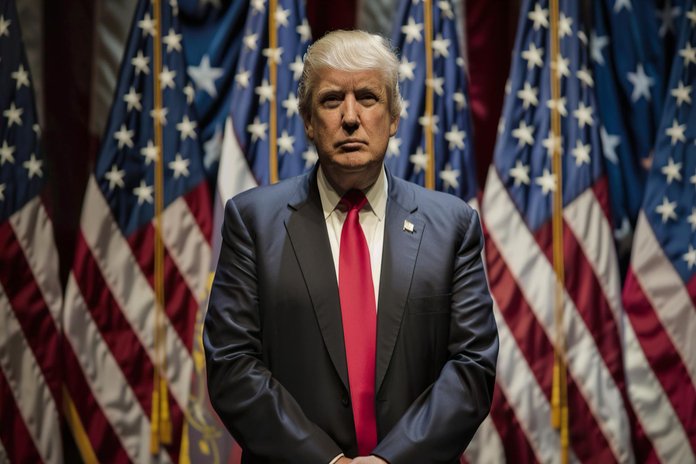Trump Crypto Stablecoin USD1: What Investors Should Know

Donald Trump’s World Liberty Financial (WLF) is making headlines once again with the announcement of its upcoming dollar-pegged stablecoin, USD1. After raising over $550 million through the sale of a separate digital token, $WLFI, the venture is set to introduce a new crypto asset backed by U.S. Treasuries, cash, and other equivalents. This move positions Trump as a key player in the crypto industry, with USD1 expected to compete directly with established players such as Tether and Circle’s USDC.
Understanding Trump’s USD1 Stablecoin
USD1 is a stablecoin designed to maintain a fixed value of $1, providing stability in the often-volatile cryptocurrency market. According to World Liberty Financial, USD1’s reserves will be fully backed and audited by a third-party accounting firm, although specific details about the auditor and the exact launch date remain undisclosed.
Stablecoins like USD1 play a crucial role in the crypto ecosystem by enabling seamless conversion between digital assets and traditional currencies. They facilitate secure cross-border transactions, making them a vital tool for sovereign investors and institutions.
Competition in the Stablecoin Market
The stablecoin market is highly competitive, with established giants like Tether (USDT) and Circle’s USDC dominating the space. According to data from CoinGecko, stablecoins in circulation currently exceed $237 billion, making it a lucrative market for issuers. Tether, the largest stablecoin provider, reported profits of over $13 billion last year, highlighting the immense potential for revenue generation in this sector.
Kevin Lehtiniitty, CEO of New York-based Borderless.xyz, commented on the challenges USD1 might face. “While launching a stablecoin is easy, building an ecosystem that adopts it is a far harder task,” he said. The success of USD1 will depend on its ability to establish a robust ecosystem and secure partnerships with major financial institutions.
BitGo and Binance: Key Players Supporting USD1
To ensure the security and liquidity of USD1, World Liberty Financial has partnered with BitGo, a California-based digital asset custody provider. BitGo will act as the custodian of USD1’s reserves and provide institutional clients with access to deep liquidity through its prime brokerage services.
Additionally, USD1 will be launched on the Ethereum and Binance Smart Chain blockchains. Binance Smart Chain, introduced by Binance in 2020, is currently the fourth-largest blockchain by asset value, according to CoinGecko. Despite recent controversies surrounding Binance’s former CEO Changpeng Zhao, who was sentenced to four months in a U.S. prison after pleading guilty to violating anti-money laundering laws, Binance’s infrastructure remains a significant player in the crypto space.
Trump’s Crypto Agenda and Potential Impact
Trump’s foray into the crypto industry aligns with his promise to become a “crypto president” and reverse the regulatory crackdown that occurred under President Joe Biden’s administration. His initiatives, including the launch of a meme coin earlier this year and now USD1, have sparked debate among political opponents and ethics experts over potential conflicts of interest.
Critics argue that Trump’s involvement in the crypto space could create ethical dilemmas, especially as he seeks to overhaul U.S. crypto regulations while profiting from ventures in the sector. Nevertheless, his supporters view these initiatives as a step toward making the United States a global leader in blockchain technology.
Potential Risks and Concerns
Despite the excitement surrounding USD1, some concerns linger about the project’s transparency and potential regulatory hurdles. World Liberty Financial has yet to disclose the name of the accounting firm that will audit USD1’s reserves, which raises questions about the project’s commitment to full transparency. Furthermore, regulatory scrutiny over stablecoins continues to increase, and any missteps could lead to significant consequences for the venture.
Binance’s involvement also adds an element of uncertainty. The platform’s recent legal troubles and its hefty $4.3 billion fine underscore the challenges faced by crypto companies operating under heightened regulatory oversight.
Final Thoughts
Trump’s crypto stablecoin, USD1, has the potential to disrupt the stablecoin market by offering a fully backed and secure alternative to existing options like Tether and USDC. Backed by U.S. Treasuries and supported by BitGo and Binance Smart Chain, USD1 could become a valuable tool for institutions and investors seeking seamless cross-border transactions.
However, the venture’s success will depend on its ability to build trust, ensure transparency, and navigate the complex regulatory landscape. For now, all eyes are on Trump’s World Liberty Financial as it prepares to enter the competitive world of crypto stablecoins.
Featured Image: Freepik





